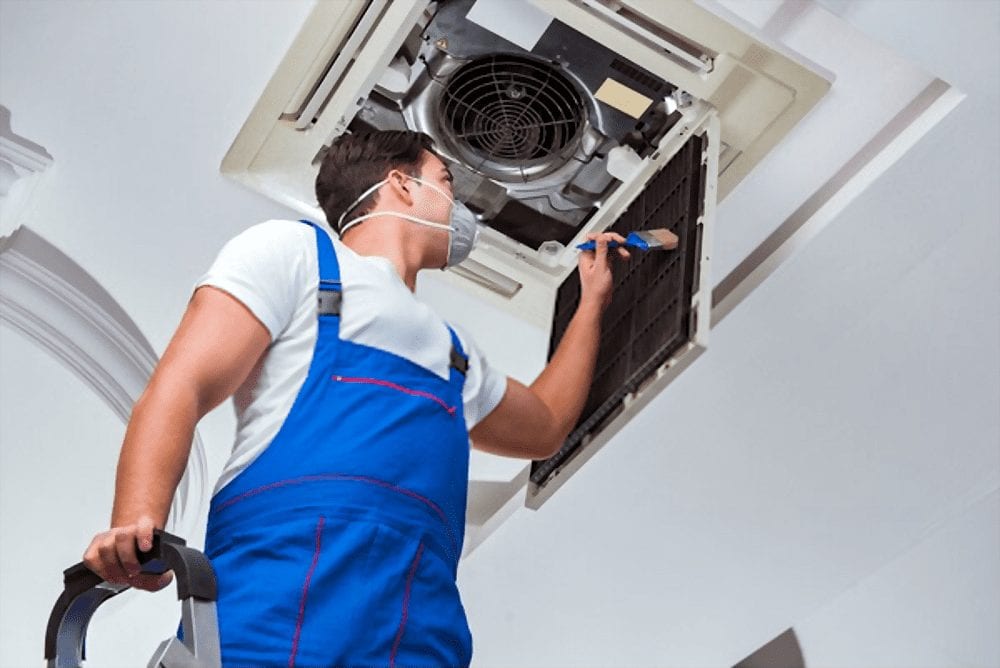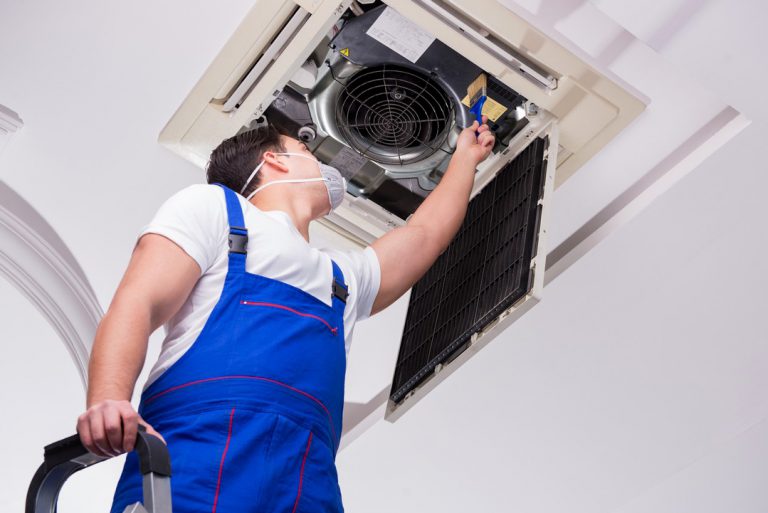Have you ever wondered why air conditioning setup in skyscrapers provides one-of-a-kind challenges?

The intricacy surpasses just cooling the spaces successfully. From navigating restricted room constraints to addressing upright circulation obstacles, each aspect needs precise preparation.
But what about the structural factors to consider and ensuring accessibility to electric power for these systems?
These are just a few items of the puzzle that make dealing with a/c installment in high-rise buildings a multifaceted endeavor.
Trick Takeaways
- Tactical tools placement and sound control are essential in skyscraper air conditioner installations.
- Effective ductwork transmitting and maintenance access make certain optimum HVAC performance.
- Safety, weight distribution, and adherence to building regulations are essential for structural stability.
- Power performance, access, and smooth assimilation improve AC system capability in skyscrapers. ac installation
Room Constraints
When mounting a/c in high-rise buildings, you may encounter space restrictions that need cautious preparation and cutting-edge options. Minimal access to specific areas can position an obstacle during installation. To tackle this, specialized devices and innovative handling might be necessary to browse with limited areas and get to the assigned areas for setting up the air conditioning units.
Additionally, in skyscrapers, sound control is essential to ensure the comfort and health of residents. The constrained areas and proximity of household systems in these buildings enhance the influence of noise produced by cooling systems. Implementing soundproofing steps, using quieter devices, and calculated placement of parts can help reduce noise disruptions for residents.
Upright Circulation Difficulties
Checking out the complexities of skyscrapers, specifically when it come to upright circulation, provides one-of-a-kind challenges for a/c installation. Ductwork challenges project in high-rise structures, where routing ducts vertically via several floors can be complex. Installment logistics come to be necessary, as collaborating the placement of ductwork and equipment in a way that assurances reliable airflow and temperature level control throughout the structure is paramount.
Maintenance access is one more substantial worry when it pertains to vertical distribution in skyscrapers. Guaranteeing that HVAC systems are quickly accessible for regular maintenance and fixings is vital for lasting capability. In addition, the logistics of devices transport to greater floors position an obstacle. Relocating heavy cooling systems, ductwork elements, and various other materials up vertical ranges calls for mindful planning and coordination to ensure safety and security and efficiency.
Structural Considerations
Thinking about the structural stability of high-rise buildings is important when preparing cooling installations. High-rise buildings are designed to support particular weights, and adding cooling systems can affect the overall weight circulation. It's crucial to adhere to building codes to make sure that the extra weight from the a/c units does not endanger the building's structural stability. Building codes lay out the maximum allowable loads for various sections of the structure, consisting of floors and wall surfaces, to avoid overloading.
Proper weight circulation is very important to prevent uneven anxiety on the structure's structure, which can result in architectural concerns with time. Heating and cooling systems should be tactically placed to distribute their weight equally and minimize any kind of potential strain on specific locations. Designers must very carefully evaluate the structure's load-bearing capability and design the cooling installment as necessary to see to it that it fulfills security requirements and regulatory demands.
Electrical Power Availability
To validate the successful installation of cooling systems in high-rise buildings, evaluating the availability of electric power is critical.
When evaluating the electrical power access for a/c in skyscrapers, take into consideration the following:
- Closeness to Power Sources: See to it that the cooling devices lie near source of power to minimize energy loss and assurance reliable operation.
- Remote Control Ability: Opt for systems that supply push-button control functions, permitting convenient tracking and modification of the cooling units from a distance.
- Power Efficiency Scores: Focus on air conditioning systems with high power efficiency scores to decrease total electricity consumption and reduced operational prices.
- Back-up Power Solutions: Implement backup power options like generators or battery back-ups to ensure continual operation of the cooling systems throughout power blackouts.

HVAC System Integration
When integrating HVAC systems into high-rise buildings, coordinate effortlessly with existing infrastructure for peak efficiency. Guarantee system compatibility by extensively evaluating the structure's layout and existing HVAC arrangement. During the installation procedure, focus on efficient assimilation to optimize the overall performance of the air conditioning system.
To accomplish effective heating and cooling system integration, work together carefully with designers, designers, and specialists to deal with any type of prospective difficulties. Conduct a thorough analysis of the structure's ventilation, ductwork, and control systems to make sure smooth compatibility with the brand-new heating and cooling tools. This proactive technique can help stop pricey rework and delays during the installment stage.
Integrating heating and cooling systems in skyscrapers needs thorough planning and specific implementation to assure peak functionality. Applying innovative technology and energy-efficient elements can better boost system performance and sustainability. By prioritizing seamless combination and system compatibility, you can create a comfortable interior environment while optimizing power efficiency in high-rise frameworks.
Regularly Asked Concerns
Are There Any Details Regulations or Codes That High-Rise Buildings Must Adhere to When Putting Up A/c Solutions?
When mounting cooling systems in skyscrapers, regulations and safety conformity are crucial. Certain codes dictate exactly how these systems should be mounted to assure the security of owners. Compliance with these guidelines is important for the correct functioning of the air conditioning units and to prevent prospective hazards.
It's important to adhere to these standards thoroughly to guarantee a risk-free and effective air conditioning system within the structure.
What Are Some Typical Solutions for Sound Control in Cooling Solutions in High-Rise Buildings?
To lessen noise in air conditioning systems in high-rise buildings, think about soundproofing products and calculated positioning to dampen resonances. Select energy-efficient models with quieter operation.
Normal maintenance checks and prompt repair work can protect against loud malfunctions. Furthermore, utilizing variable rate innovation can minimize sound levels during low-demand durations.
Exactly How Do Severe Weather, Such as High Winds or Lightning Strikes, Impact the Installation and Operation of Cooling Solutions in High-Rise Buildings?
Severe weather such as high winds or lightning strikes can significantly impact the installation and procedure of air conditioning systems in high-rise buildings. These weather condition aspects can present architectural challenges, influencing the stability and efficiency of the systems.
When facing such conditions, it is essential to consider the resilience of the building's framework and the sturdiness of the heating and cooling parts to ensure suitable working and safety.
Exist Any Type Of Unique Factors To Consider for Including Smart or Energy-Efficient Technologies Into Cooling Equipments in High-Rise Buildings?
When considering including smart or energy-efficient modern technologies into cooling systems in high-rise buildings, there are some special considerations to remember. Integration challenges may develop when connecting different systems, and adjusting these technologies to function efficiently in a vertical setting can be tricky.
However, energy-saving innovations provide great prospective for minimizing costs and ecological effect. It is very important to carefully prepare and apply these remedies to maximize their advantages.
What Are the Upkeep Requirements for A/c Systems in High-Rise Buildings, and Exactly How Frequently Should They Be Serviced?
To maintain your a/c systems in high-rise buildings running efficiently, routine upkeep is essential.
Servicing frequency depends upon variables like use and system complexity. Typically, it's suggested to have your air conditioner devices inspected at the very least yearly by an expert technician.
This regular upkeep not just assures leading performance yet additionally aids in preserving power efficiency, saving you money in the long run.
Conclusion
On the whole, installing a/c in skyscrapers offers unique difficulties as a result of space constraints, upright circulation obstacles, structural considerations, electrical power access, and heating and cooling system assimilation.
It calls for cautious planning and control to make certain the system operates successfully and efficiently in such intricate environments.
By addressing these challenges head-on and dealing with seasoned experts, structure owners can guarantee that their residents remain comfy and trendy even in the tallest of buildings.
